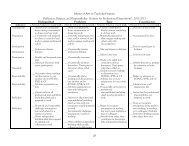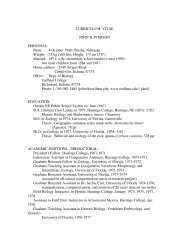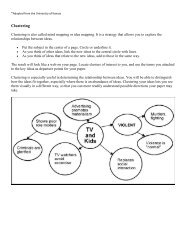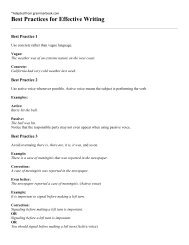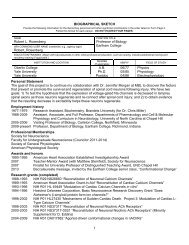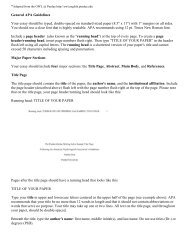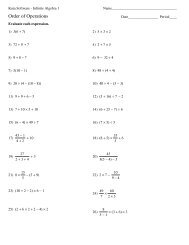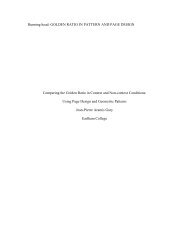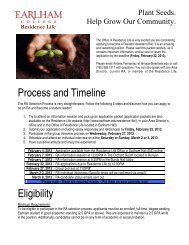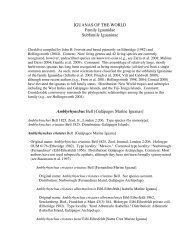Earlham College, Richmond, IN - Earlham Computer Science ...
Earlham College, Richmond, IN - Earlham Computer Science ...
Earlham College, Richmond, IN - Earlham Computer Science ...
You also want an ePaper? Increase the reach of your titles
YUMPU automatically turns print PDFs into web optimized ePapers that Google loves.
URPC Proceedings<br />
Synthesis of Selected Avenic Acid Analogs<br />
Nicholas L. Cummings, Rebecca W. Ransohoff, Mark G. Stocksdale †<br />
Department of Chemistry, <strong>Earlham</strong> <strong>College</strong>, National Road West, <strong>Richmond</strong>, <strong>IN</strong> 47374<br />
stockma@earlham.edu<br />
Graminaceous plants, when grown in iron-poor soil produce and secrete low molecular<br />
weight iron-chelating compounds (phytosiderophores) for the sequestering and active<br />
transport of iron to the plant itself. We are interested in synthesizing avenic acid (the phytosiderophore<br />
produced by oats) and related analogs in order to study this iron-transport<br />
system. We present our synthesis of selected avenic acid analogs.<br />
This research was supported by the Stephen and Sylvia Tregidga Burges Endowed Research<br />
Fund.<br />
Spin Assignments in Selenium-71<br />
Stephen Kuhn, Dr. Robert Kaye †<br />
Ohio Wesleyan University<br />
sjkuhn08@earlham.edu<br />
Se-71 shows signs of moderate collectivity by having both organized behavior of excited<br />
states (grouped into rotational bands) at high spin (or angular momentum) and an<br />
irregular pattern of excited states at low excitation energy. Previous research at Ohio Wesleyan<br />
suggests that adjustments should be made to the level scheme of Se-71 by changing<br />
a positive-parity band to a previously “missing” negative-parity band. This reorganization<br />
of the level scheme, however, opened new questions about the discrete spin values of the<br />
excited states belonging to this band. The primary goal of this research was to measure<br />
the spins of the energy levels in the new negative-parity band using data collected from a<br />
fusion-evaporation reaction at Florida State University that populated high-spin states in<br />
71Se. The analysis techniques used were comparisons with similar nuclei, structural arguments,<br />
and directional correlation of oriented nuclei (DCO) ratios. DCO ratios compare<br />
γ radiation intensity at different angles to show whether quadrupole or dipole radiation is<br />
emitted, and thus determine how much spin is carried away by the γ photon in a transition<br />
between two energy states. Thus if the spin of one of the states involved in the transition is<br />
known, then the spin of the other state can be determined. The experimental DCO results<br />
were compared against theoretical DCO ratio predictions in order to infer the change in<br />
spin involved with as many transitions in 71Se as possible. The spins of 18 excited states<br />
were measured. The results show that Se-71 is similar to its next lightest isotone 69Ge at<br />
low excitation energy, but is more similar to its heavier neighbors 73Se and 73Kr at high<br />
spin, indicating the transitional nature of this nucleus. Also, a re-investigation of the γ-ray<br />
coincidence data revealed new transitions in 71Se that extend the level scheme to higher<br />
spins.<br />
URPC-10



